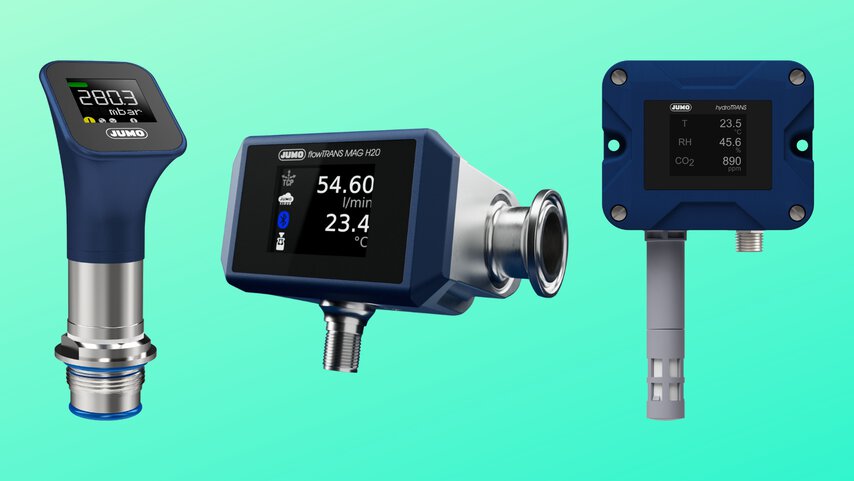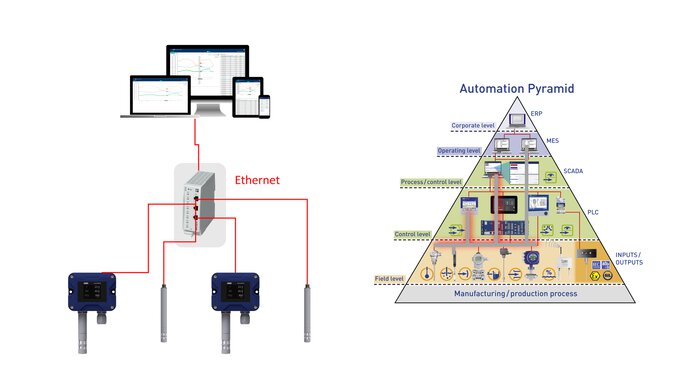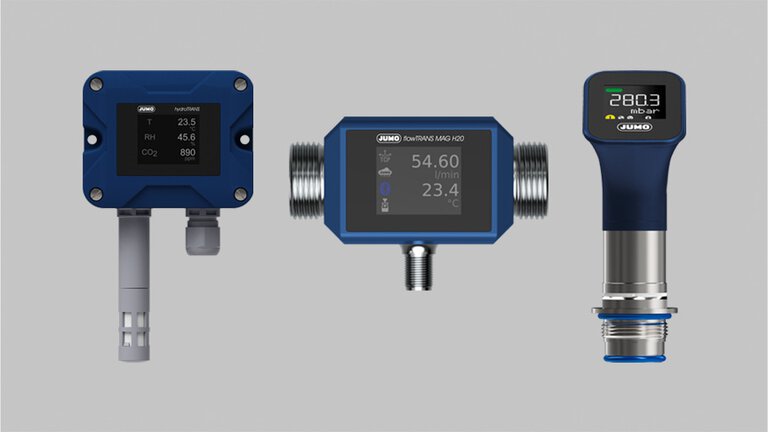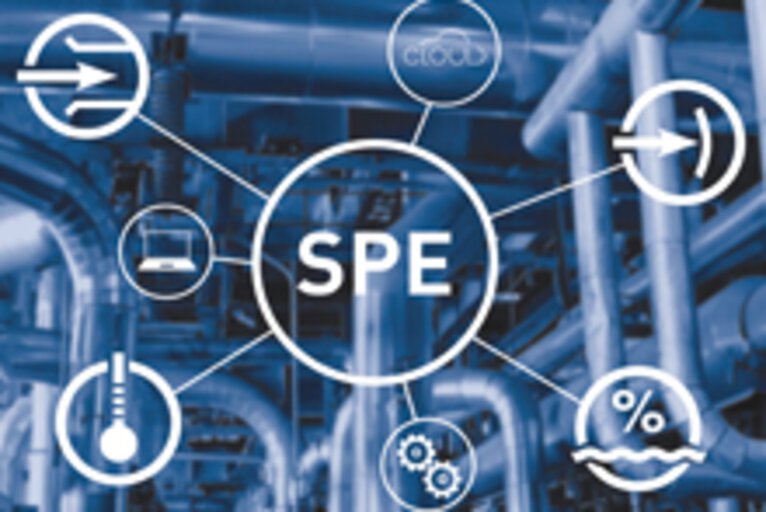

Smart measurement sensors with Single Pair Ethernet (SPE)
In recent years, the industry has been undergoing a significant change in the way it communicates - from hierarchical networks characterized by a diversity of systems and standards, we are moving to a more centralized and unified approach. This new trend, based on Single-Pair Ethernet (SPE) technology, offers a solution to some of the long-standing problems associated with the complexity of traditional networks. In this article, we take a look at how this innovative technology is revolutionizing the industrial communications environment, promising a more efficient, scalable and integrated future. Keep reading to learn how single-pair Ethernet sensors can benefit your business!
A new trend in communication: From hierarchy to centralized management
Traditional industrial networks are characterized by a hierarchical structure, with multiple levels of communication and a variety of bus systems. Different parts of the factory have their own hardware architectures and buses dedicated to specific applications. Such an architecture presents various problems including the complexity and variety of communication protocols and standards used (e.g. Profibus, Ethercat and CAN), limited scalability and performance.
The advent of Single Pair Ethernet (SPE) technology has sparked a revolution in industrial networking. SPE offers a centralized, Ethernet-based solution that eliminates the problems of traditional architectures.

Pyramid of automation
Where did Single Pair Ethernet come from?
The development of Single Pair Ethernet (SPE) technology began in 2011 with the publication of the BroadR-Reach communications standard for the automotive industry. Here are the main goals of SPE's creation and its features:
- Application: Originally intended for video transmission in automotive vehicles.
- Features: High-speed operation in vehicles (communication between on-board systems).
- CAN bus replacement: The goal was to replace obsolete CAN bus systems in automotive applications.
Specification: untwisted two-wire cable, capable of 100 Mbps data transmission (high Ethernet speed on just 2 wires), which provided weight savings and ease of connection.
SPE quickly spread and found wide application in various industrial sectors.
Single Pair Ethernet: a new era in Industry 4.0
Single Pair Ethernet (SPE) is a cutting-edge approach in the field of network infrastructure that promises significant changes in the way data is transmitted, especially in the context of the Industrial Internet of Things (IIoT). This technology opens up the possibility of directly transmitting sensor data using just two wires of Ethernet cable, enabling a unified and consistent communications architecture extending from the sensor all the way to the cloud.
SPE addresses the needs of today's industry by enabling a consistent communications infrastructure across a broad spectrum of applications where data is critical. The concept is based on the ability to extend Ethernet connectivity to the lowest level in the communications hierarchy - that is, to sensors where broadband connections were previously not possible or practical. SPE thus offers a solution for efficient data transfer, even for compact devices requiring long range, which is crucial for the development of IIoT and modern industrial communications.
Key advantages of Single Pair Ethernet: minimization of cabling, speed, scalability
- Minimization of cabling: Single Pair Ethernet technology minimizes the work associated with cabling as it requires only one pair of wires. This same pair of wires is used for powering sensors through Power over Data Line (PoDL) and for fast transmission of digital precise measurement values. As a result, the installation and startup of the system are simple and trouble-free.
- Speed: It offers various data transmission speeds, from 10 Mb/s to 1 Gb/s, allowing for the solution to be tailored to the specific needs of the application. Therefore, it is an ideal solution for systems requiring fast and reliable data transmission, such as production automation and robotics.
- Scalability: Single pair Ethernet facilitates the expansion of existing systems. Its simple architecture allows for the easy addition of new devices and modules without the need for significant redesign of the entire network infrastructure. This flexibility is key in the rapidly developing industry, enabling easy adaptation to changing needs.
Additional advantages of SPE:
- Flexible installation thanks to a range of up to 1000 meters
- Increased resistance to electromagnetic interference
- Lower energy consumption
- Secure and precise transmission of "digital measurement values" in real-time
- Integrated PoE (Power over Ethernet) power supply
- Direct Ethernet access from PLC controllers and SCADA systems
Application of SPE Technology in Industry
Single Pair Ethernet technology opens up new possibilities in many industrial sectors. Here are a few examples of its applications:
- Production Automation: This technology can be used to connect machines and equipment in automated production systems. It allows for fast and reliable data transmission, which is essential for the efficient operation of production lines. In this application, sensors like the hydroTRANS S20 for humidity and temperature can be used to maintain appropriate climatic conditions in production processes.
- Energy Industry: In the energy sector, it helps in monitoring and managing the distribution of energy and can facilitate the integration of renewable energy sources into the power grid. SPE pressure transducers, such as the DELOS S02, can be used in power plants to monitor pressure in steam or gas systems.
- Food Industry: In the food industry, Single Pair Ethernet plays a key role in production automation, enabling fast and reliable data transmission between machines and equipment. This is essential for the efficiency of production lines, especially in the context of monitoring critical parameters for product quality. Flow meters like the flowTRANS MAG H20 can be used to monitor the flow of liquids and gases in production processes, such as during the dosing of raw materials, control of fermentation processes, filling of packaging, or monitoring the flow of wort in breweries.
- Smart Buildings: Single pair Ethernet technology can be used to control HVAC systems, lighting, and security in smart buildings.
- Automotive Industry: In this sector, Single Pair Ethernet is used to connect various systems in vehicles, such as safety and infotainment systems. It can also facilitate vehicle diagnostics and servicing.
In addition to the examples mentioned above, SPE can also be used in other industrial sectors, such as:
- Chemical Industry
- Machinery Industry
- Paper Industry
- Pharmaceutical Industry
Example of SPE Device Application: Monitoring Climate in a Production Hall
Problem: Managing temperature and humidity in a production hall is essential for the quality of manufactured products, the comfort of employees, and the proper functioning of machines. Traditional monitoring systems can be complex and costly to maintain.
SPE-based Solution:
- Intelligent SPE Sensors: Special temperature and humidity sensors utilizing SPE technology are distributed at strategic points in the production hall. SPE sensors require only one pair of wires for power and data transmission.
- SPE Switch: The sensors connect to a dedicated SPE switch, responsible for collecting and processing their data.
- PLC Controller and SCADA/CLOUD System: The switch communicates with a PLC controller (e.g., JUMO variTRON 500). The PLC processes data from the sensors and can send signals to climate control systems (e.g., ventilation, heating). Simultaneously, information from the sensors is transmitted to the JUMO SCADA/CLOUD system.
- Monitoring by the Manager: The production manager, using a tablet or computer, can continuously monitor the temperature and humidity in the hall using the JUMO system. Access to this information allows for decisions to be made to optimize conditions in the production hall.
- Security (optional): If the production facility wants the additional ability to remotely control and monitor the system, a VPN (Virtual Private Network) with a firewall can be implemented. This would allow secure access to the climate control system from anywhere in the world.

An example of the application of our sensors with SPE: Monitoring the climate on the production floor
About the author
My name is Ewelina Szmit and I have been working in the field of content marketing for several years, combining my professional skills with my passion for writing. I believe that even the most technical topics can be presented in an interesting and accessible way for everyone. Outside of work, I develop my creativity by creating newspaper collages. I like to spend my free time most actively, walking my dog or running.

Technical specialist
Katarzyna Tracz - Inside Sales Engineer +48 71 339 32 86 Katarzyna.Tracz@JUMO.net +48 71 339 32 86Comments
We encourage you to leave your comments via the form below. They will be posted online after they have been approved through our review process.






